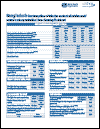What's New
Displaying results 171 - 180 of 4052
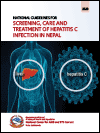
Resource | Publications,
The current HIV program is reaching KPs and PLHIV for prevention and treatment of HIV. The integrated intervention to KPs and providing HCV related activities like prevention, early diagnosis and providing treatment to cure HCV infection would be the cost-effective approach to decrease the burden of HCV among them. The availability of effective treatment – Direct - Acting Antiviral (DAA) has prevented HCV related consequences and cured from HCV infections. The pangenotypic DAA do not require genotyping of the virus and current WHO guidelines recommends that all HCV infected people are treated with minimal lab investigations and follow up. This recommendation helps us to combat Hep C related complications and prevent morbidities and mortalities and provide opportunity to treat clients at all kind of health facilities.
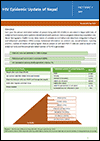
Resource | Fact Sheets,
Each year the annual estimated number of people living with HIV (PLHIV) is calculated in Nepal with help of analytical tools namely AIDS Epidemic Model (AEM) and Spectrum. Various program data as key population size, Nepal Demographic Health Survey data, trends of prevalence and behavioral data from integrated biological and behavioral surveillance (IBBS) survey, behavioral information on condom use, sexual behavior, injecting practice, number of clients etc and program data as people on ART and PMTCT data are used as input in the analytical tools and the annual estimated number of PLHIV is generated.
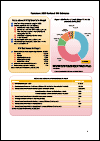
Resource | Fact Sheets,
2019 National HIV Estimates factsheet shows the information on HIV prevalence, HIV infections, trend of new infections and deaths.
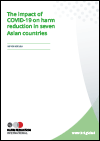
Resource | Publications,
People who use drugs, especially people who smoke or inject drugs, face additional risks and vulnerabilities to COVID-19 infection compared to the general population. Maintaining services for this population and safeguarding funding for harm reduction is therefore crucial. The pandemic and related responses have affected harm reduction service provision and the lives of people who use drugs worldwide.
Understanding the impact of COVID-19 on harm reduction funding and service provision is essential for informing donor and government action as well as civil society advocacy.
This report and briefing summarise evidence from civil society in seven Asian countries (Cambodia, India, Indonesia, Nepal, Thailand, the Philippines and Vietnam) and provides recommendations to donors and governments on protecting harm reduction in the COVID-19 era.
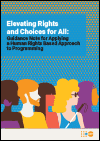
Resource | Publications,
The Guidance Note provides an explanation of each one of these components, how they relate to UNFPA’s mandate, and outlines key programming steps that can be taken to advance them. It also provides illustrative examples of applying a HRBA across UNFPA’s three transformative results: zero unmet need for contraception; zero preventable maternal deaths; and zero gender-based violence and harmful practices.
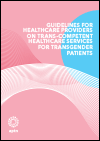
Resource | Publications,
These guidelines have been developed for healthcare providers on trans-competent healthcare services for transgender patients. We hope these guidelines will give you a better understanding of the experiences trans people face as they navigate their way through accessing health services. It is our hope that these guidelines will increase knowledge about trans-inclusive health services in order to create positive health care experiences for trans people and ensure their right to the highest attainable standard of health. This includes ensuring that healthcare meets the Availability, Accessibility, Acceptability, and Quality (AAAQ) framework set out in international human rights standards.
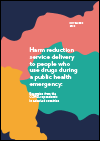
Resource | Publications,
For those people who are highly drug dependent, with a resulting compromised immune system, COVID-19 presents a serious threat to life regardless of age. Governments, non-governmental (NGOs) and community-based organisations (CBOs) working to support people who use drugs, and other vulnerable and marginalised people in society, have had to react rapidly to the massive increase in COVID-19 transmission across countries and continents.
The ten case studies presented here provide a snapshot of the responses of specific organisations and communities who work with people who use drugs and some other marginalised groups around the world.
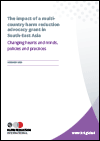
Resource | Publications,
Harm Reduction Advocacy in Asia, or HRAsia, is a Global Fund multi-country grant that has provided funding and technical support for advocacy in Cambodia, India, Indonesia, Nepal, the Philippines, Thailand and Vietnam. The programme focused on removing legal barriers, community systems strengthening and the gathering and use of strategic information for advocacy. It has helped to change hearts and minds, and ultimately policies and practices related to drug use and harm reduction. Communities of people who use drugs have become more meaningfully involved in advocacy and service provision.
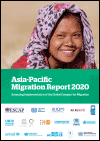
Resource | Publications,
The report presents an overview of migration in Asia and the Pacific. It discusses the Global Compact for Migration (GCM) implementation in the context of the indicative clusters of GCM objectives presented in General Assembly resolution 73/326. It also discusses short- and long-term impacts of the COVID-19 pandemic on migrants and their families, and recommends future collaborative action by governments and relevant stakeholders in order to achieve safe, orderly and regular migration in Asia and the Pacific.






